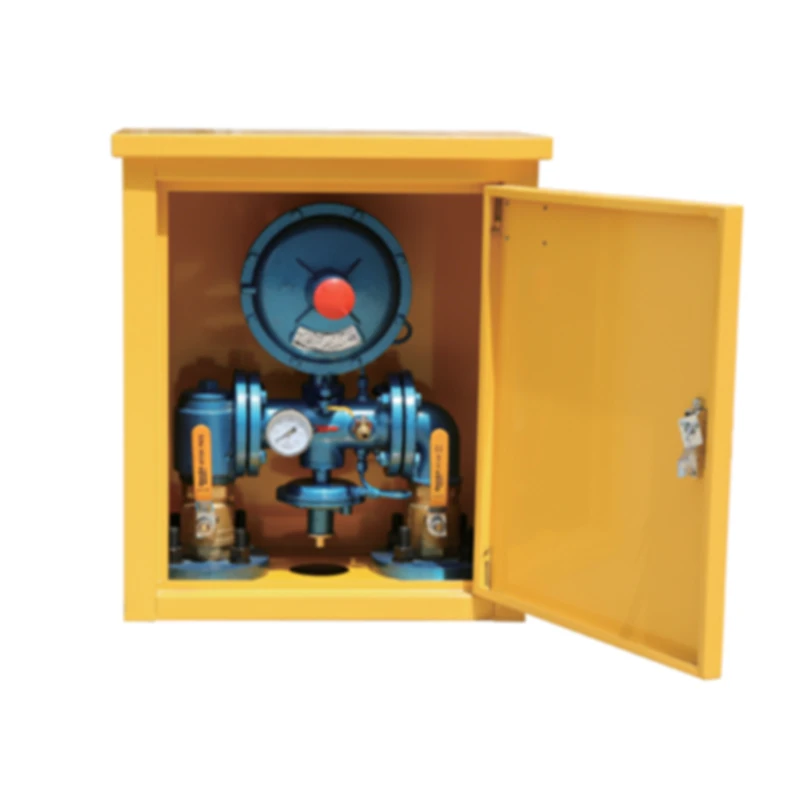
Nov . 24, 2024 16:25
Back to list
Understanding the Functionality and Applications of Pressure Reducing Regulators
Understanding Pressure Reducing Regulators Essential Tools for Managing Fluid Systems
Pressure reducing regulators (PRRs) are critical components in various industries, ensuring that fluids, whether gases or liquids, are delivered at a safe and manageable pressure. These devices play a pivotal role in maintaining system integrity and operational efficiency, particularly in applications such as natural gas distribution, industrial gas processes, and hydraulic systems.
What is a Pressure Reducing Regulator?
A pressure reducing regulator is designed to lower and stabilize the inlet pressure of a fluid to a predetermined level at the outlet. Without these regulators, systems could experience excessive pressure that might lead to equipment failure, leaks, or even catastrophic incidents. PRRs are engineered to automatically adjust and maintain the required downstream pressure regardless of fluctuations in the upstream supply pressure, making them indispensable in many scenarios.
How PRRs Work
The operation of a pressure reducing regulator is based on balance and feedback mechanisms. The regulator typically consists of a diaphragm, spring, valve, and inlet and outlet ports. When fluid enters the regulator, the diaphragm moves in response to the pressure exerted on it. If the outlet pressure exceeds the desired set point, the diaphragm pushes against the spring, closing the valve to reduce flow. Conversely, if the downstream pressure drops, the spring expands, allowing more fluid to flow through.
This dynamic process allows the PRR to maintain a consistent output pressure, adapting in real-time to any variations in the inlet pressure or changes in demand from the system it serves.
Applications of Pressure Reducing Regulators
Pressure reducing regulators are employed in a variety of settings. In natural gas systems, for instance, they ensure that gas is delivered at a safe pressure to households and industries. In manufacturing, PRRs are crucial in controlling the pressurization of hydraulic fluids, which are vital for the operation of machinery and tools.
pressure reducing regulators

Similarly, in laboratory settings, maintaining specific gas pressures is key for experiments and reactions, highlighting the versatility of PRRs across different sectors. Their ability to provide reliable pressure control means they are also found in aerospace, pharmaceuticals, and even water supply systems.
Benefits of Using Pressure Reducing Regulators
1. Safety By controlling the pressure of the fluid being transported, PRRs significantly reduce the risk of leaks and bursts, enhancing operational safety.
2. Efficiency Regulating pressure ensures that equipment operates within optimal ranges, which can lead to improved performance and reduced energy consumption.
3. Cost Savings Preventing overpressure and product loss leads to lower maintenance costs and less downtime, ultimately saving money in the long run.
4. Flexibility Many modern PRRs come with adjustable set points, allowing for easy reconfiguration depending on specific operational needs.
Conclusion
In summary, pressure reducing regulators are essential devices that help maintain safety and efficiency in fluid systems across various applications. Understanding their function, operation, and benefits can help industries optimize their processes and mitigate risks associated with fluid transportation. As technology advances, the development of more sophisticated PRRs will continue to enhance their role in ensuring safe and efficient operations nationwide. Whether in industrial, commercial, or residential applications, the importance of pressure reducing regulators cannot be understated.
Latest news
-
Safety Valve Spring-Loaded Design Overpressure ProtectionNewsJul.25,2025
-
Precision Voltage Regulator AC5 Accuracy Grade PerformanceNewsJul.25,2025
-
Natural Gas Pressure Regulating Skid Industrial Pipeline ApplicationsNewsJul.25,2025
-
Natural Gas Filter Stainless Steel Mesh Element DesignNewsJul.25,2025
-
Gas Pressure Regulator Valve Direct-Acting Spring-Loaded DesignNewsJul.25,2025
-
Decompression Equipment Multi-Stage Heat Exchange System DesignNewsJul.25,2025

